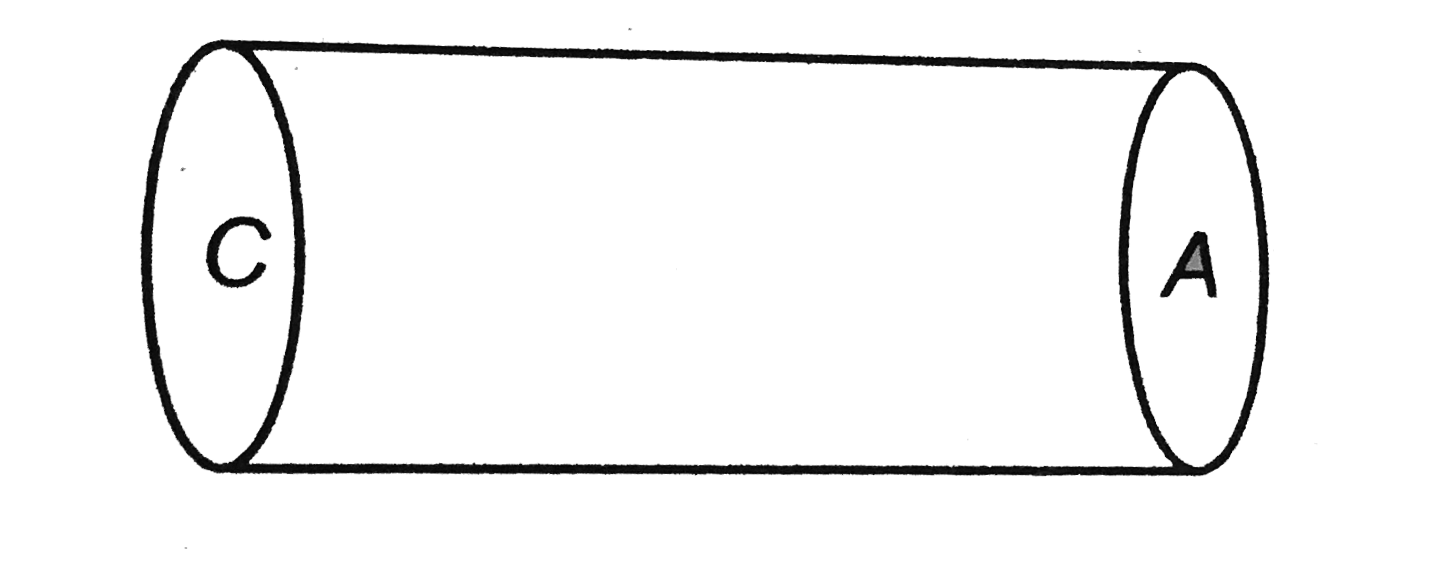A hollow cylinder has a charge qC within it. If ϕ is the electric flux in unit of voltmeter associated with the curved surface B the flux linked with the plance surface A in unit of voltmeter will be

qε0−ϕ
q2ε0
ϕ3
12(qε0−ϕ)
The correct Answer is:d
Gauss's law states that the net electric flux through any closed surface is equal to the net charge inside the surface divided by ε0.
i.e., ϕtotal=qε0
Let electric flux linked with surfaces, A,B and C are ϕA,ϕB and ϕC respectively. That is
ϕtotal=ϕA+ϕB+ϕC
Since ϕC=ϕA
∴2ϕA+ϕB=ϕtotal=qε0
or ϕA=12(qε0−ϕB)
but ϕB=ϕ
Hence, ϕA=12(qε0−ϕ)
Topper's Solved these Questions
- ELECTRIC CHARGE, FIELD & FLUXBOOK - A2ZCHAPTER - ELECTRIC CHARGE, FIELD & FLUXEXERCISE - Assertion Reason
7 Videos
- ELECTRIC CHARGE, FIELD & FLUXBOOK - A2ZCHAPTER - ELECTRIC CHARGE, FIELD & FLUXEXERCISE - Section D - Chapter End Test
29 Videos
- ELECTRIC CHARGE, FIELD & FLUXBOOK - A2ZCHAPTER - ELECTRIC CHARGE, FIELD & FLUXEXERCISE - AIPMTNEET Questions
24 Videos
- DUAL NATURE OF RADIATION AND MATTERBOOK - A2ZCHAPTER - DUAL NATURE OF RADIATION AND MATTEREXERCISE - Section D - Chapter End Test
30 Videos
- ELECTRIC POTENTIAL & CAPACITANCEBOOK - A2ZCHAPTER - ELECTRIC POTENTIAL & CAPACITANCEEXERCISE - Section D - Chapter End Test
29 Videos
Similar Questions
If a hemispherical body is placed in a uniform electric field E then the flux linked with the curved surface is E B
View SolutionA hollow cylinder has a charges q coulomb within it. If ϕ is the electric flux in units of V-m associated with the curved surface B, the flux linked with the plane surface A in units of V-m will be

View Solution
Knowledge Check
A hollow cylinder has a charge q coulomb within it. If ϕ is the electric flux in unit of voltmeter associated with the curved surface B, the flux linked with the plane surface A in unit of voltmeter will be
 A12(qε0−ϕ)Bq2ε0Cϕ3Dqε0−ϕ
A12(qε0−ϕ)Bq2ε0Cϕ3Dqε0−ϕA hollow cylinder has a charge q coulomb within it. If ϕ is the electric flux in unit of voltmeter associated with the curved surface B, the flux linked with the plane surface A in unit of voltmeter will be
 A12(qε0−ϕ)Bq2ε0Cϕ3Dqε0−ϕ
A12(qε0−ϕ)Bq2ε0Cϕ3Dqε0−ϕA hollow cylinder has a charge qC within it. If ϕ is the electric flux in unit of voltmeter associated with the curved surface B the flux linked with the plance surface A in unit of voltmeter will be
 A12(qε0−ϕ)Bq2ε0Cϕ3Dqε0=ϕ
A12(qε0−ϕ)Bq2ε0Cϕ3Dqε0=ϕ
A hollow cylinder has a charge q coulomb within it. If ϕ is the electric flux is unit of volt -m associated with the curved surface B, the flux linked with the plane surface A in the same units will be

View SolutionWhat is the electric flux linked with closed surface?

View SolutionFind the total flux due to charge qassociated with the given hemisphercal surface

View SolutionFind the total flux due to charge q associated with the given hemispherical surface

View SolutionTotal electric flux associated with unit positive charge in vacuum is
View Solution
